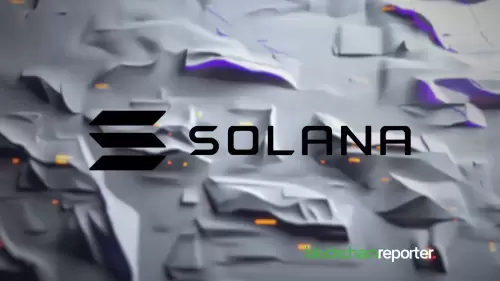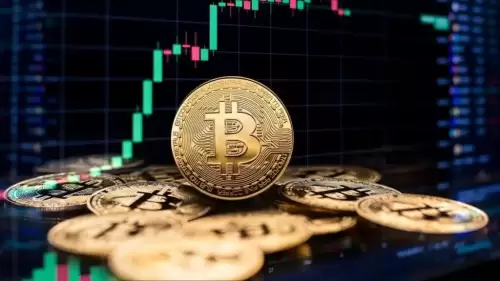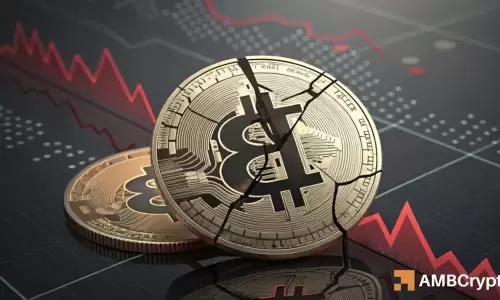 |
|
 |
|
 |
|
 |
|
 |
|
 |
|
 |
|
 |
|
 |
|
 |
|
 |
|
 |
|
 |
|
 |
|
 |
|
Cryptocurrency News Articles
Bitcoin Solaris (BTC-S) Mobile Mining Promises a New Model for Engaging XRP Ledger Users
May 14, 2025 at 07:00 pm

Bitcoin Solaris, a project aiming to combine the performance of Ripple with greater user engagement, is advancing with Presale Phase 3 and a new analysis highlighting its mobile mining model.
Ripple made a name for itself by addressing the inefficiencies of global settlement systems. Its XRP Ledger introduced fast, low-fee transactions, becoming a favorite among institutions seeking to streamline cross-border transfers. But while Ripple advanced transactional speed, it left a gap in user-level engagement and reward mechanisms.
Enter Bitcoin Solaris, presenting a new model that blends performance with accessibility through mobile mining and a significantly lower energy footprint. Rather than optimizing only for speed, Bitcoin Solaris addresses the broader challenge: how to give users a direct role in securing and benefiting from the network. Its architecture supports rapid transaction finality and a unique, energy-efficient mining method that enables any smartphone owner to contribute to the ecosystem — and earn daily rewards for doing so.
Mobile Mining with a 95% Energy Reduction
At the heart of Bitcoin Solaris’s model is the Nova App, a mobile platform that allows users to mine BTC-S tokens by simply allocating a small portion of their phone’s storage and idle CPU. Unlike traditional proof-of-work mining — which demands high-powered hardware and continuous energy consumption — Nova operates in the background with minimal resource impact.
This model reduces the energy requirement of participation by over 95% compared to legacy networks like Bitcoin, and offers higher yield potential than staking or passive holding systems like XRP. Users receive BTC-S daily based on uptime and app engagement, turning mobile devices into lightweight, decentralized nodes of participation — without the technical overhead.
Dual-Layer Blockchain Engineered for Speed and Scale
Bitcoin Solaris is built on a dual-layer architecture designed to balance decentralization, security, and high throughput:
This design enables the network to process high-volume smart contracts, token transfers, and mobile mining validations — all while maintaining decentralization and reducing infrastructure load. Compared to Ripple’s single-layer model optimized for payment speed, Bitcoin Solaris offers a more flexible, inclusive platform for both developers and everyday users.
Presale Phase 3: Entry Point Before Ecosystem Activation
Bitcoin Solaris is now in Presale Phase 3, where BTC-S tokens are priced at $3 USDT. This stage allows users to acquire tokens ahead of centralized exchange listings and before the Nova App goes live for public mining.
The supply is permanently capped at 21 million tokens, with 4.2 million BTC-S (20%) allocated to presale participants. There is no inflationary minting and no staking lockups, meaning early access offers a clear utility advantage — especially as mobile mining becomes the primary method of token distribution after launch.
In a detailed analysis, Crypto Chino explores how Bitcoin Solaris’s mobile mining model compares to legacy staking and transaction systems like XRP. The video highlights Nova’s energy-saving approach, daily yield potential, and how Bitcoin Solaris is designed to reward active engagement across devices.
Security and Verification: Audited from the Ground Up
User confidence is crucial, especially in projects offering passive earnings and mobile interaction. Bitcoin Solaris has completed a comprehensive set of third-party audits and verification procedures to ensure infrastructure transparency and protocol integrity:
These measures ensure the platform’s reward mechanisms and smart contract structures can operate at scale without introducing security gaps — an area where even well-established projects like Ripple have seen scrutiny over time.
Ripple changed how institutions move money — but Bitcoin Solaris is redefining how individuals earn from crypto. With a dual-layer architecture, audited infrastructure, and mobile mining that drastically reduces energy use, it represents a new phase in blockchain design—one that aligns performance with user inclusion. As mobile mining goes live and daily participation begins, Bitcoin Solaris positions itself as a complete ecosystem where contribution and reward are finally balanced.
Disclaimer:info@kdj.com
The information provided is not trading advice. kdj.com does not assume any responsibility for any investments made based on the information provided in this article. Cryptocurrencies are highly volatile and it is highly recommended that you invest with caution after thorough research!
If you believe that the content used on this website infringes your copyright, please contact us immediately (info@kdj.com) and we will delete it promptly.






























































